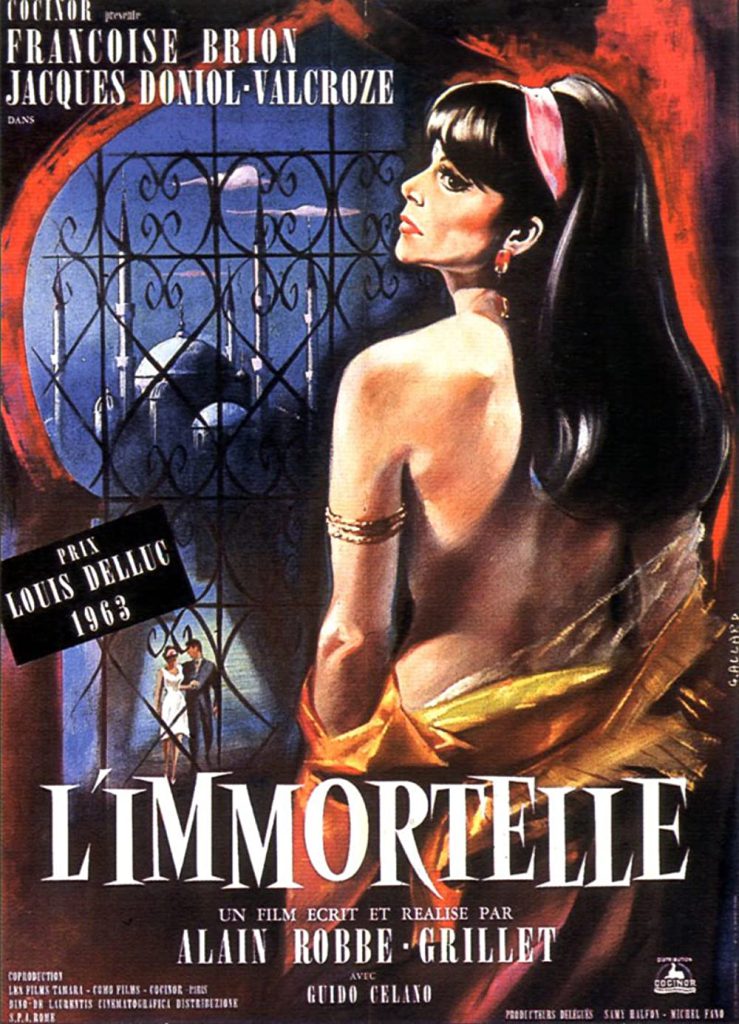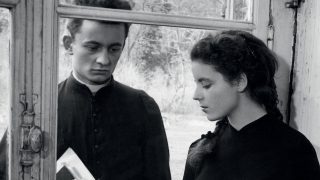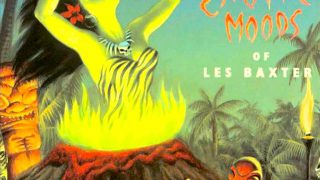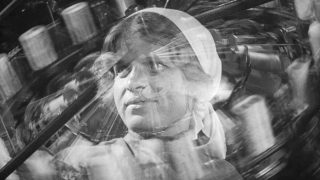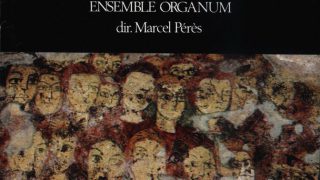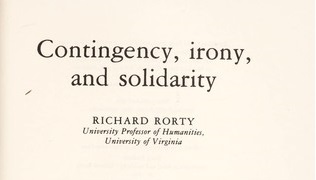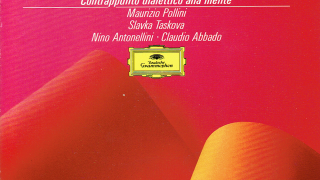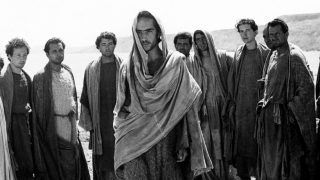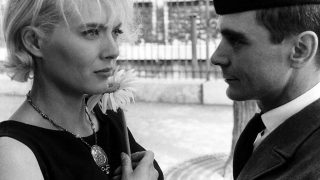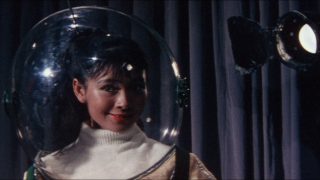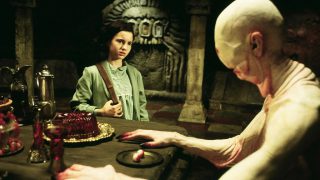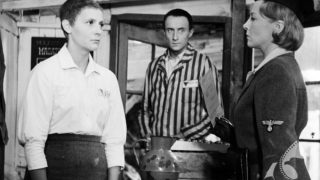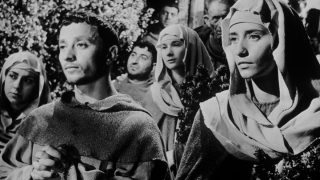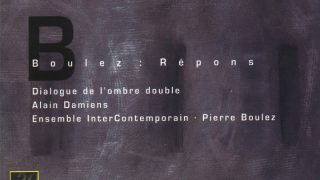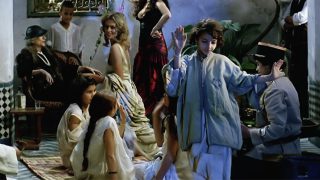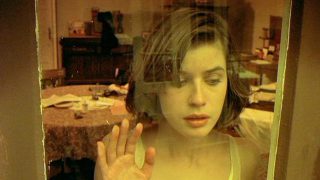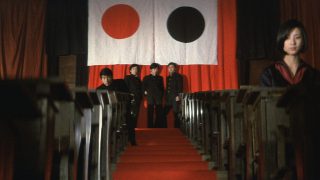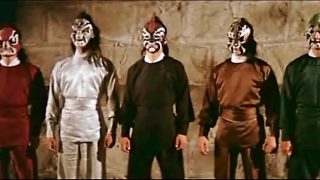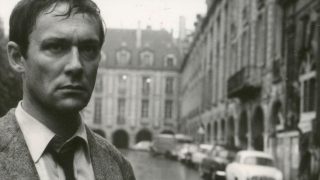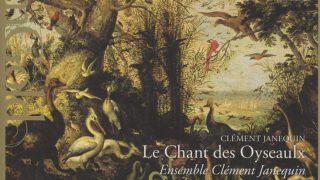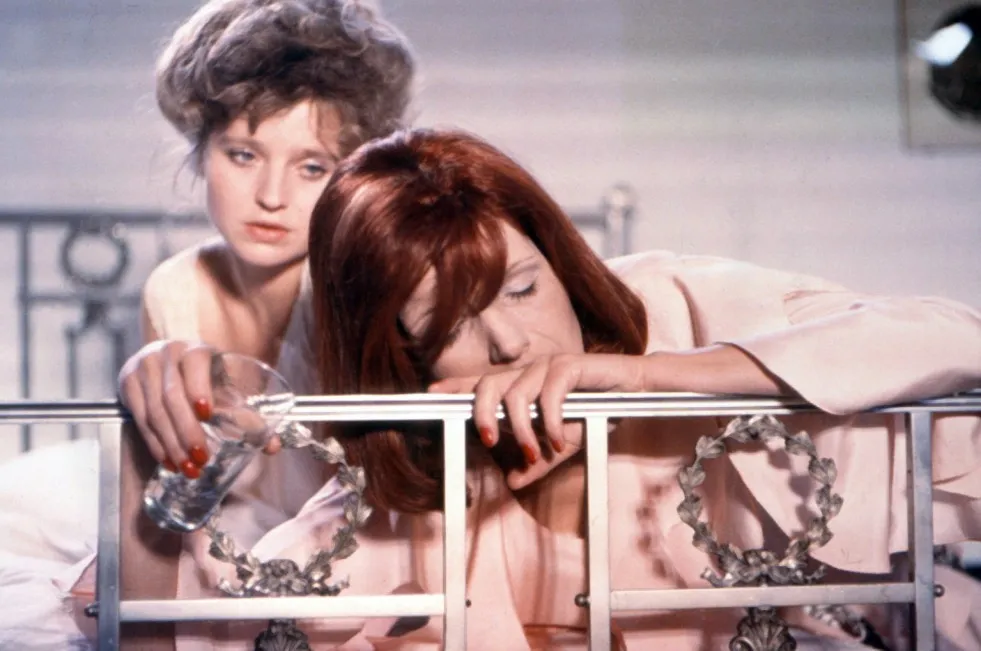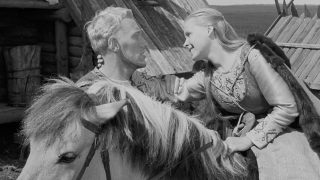Overview
“L’Immortelle (The Immortal One)” is a 1963 film written and directed by Alain Robbe-Grillet, a French writer and film director known mainly for his “Nouveau Roman” novels of the 1950s and the 1960s.
It was his first film as a director. It was released after “Last Year at Marienbad” (1961) which he wrote.
Set in Istanbul, Turkey, it depicts the strange relationship between a French man and a mystery woman with experimental techniques, such as non-chronological narrative and a series of discontinuous shots.
It was a collaboration between France, Italy, and Turkey. Black & white. 101 minutes.

Plot
A French man “N” (Jacques Doniol-Valcroze) is working as a substitute teacher in Beyköy, Turkey. He speaks only French.
When he visits Istanbul during summer vacation, he encounters a beautiful woman “L” (Françoise Brion), who speaks French, at the port. There is a shade-wearing man “M” (Guido Celano) beside her. M walks with his two black dogs. N asks L his way home. L puts him in her white car, and drives him home.
N has a party with his colleagues and their friends at his lodgings. He invites L to the party. Though L calls herself as “Lale” (the word meaning “tulip” in Turkish), her real name is unclear, and she doesn’t reveal her identity.
N and L make friends with each other. They walk together around the city of Istanbul, and visit sightseeing spots, such as the Grand Bazaar, royal palaces, Eastern Orthodox Churches, Islamic mosques, Bosphorus (the Strait of Istanbul), Theodosian Walls, and Basilica Cistern (Yerebatan Sarayı).
Though L speaks Turkish as well as Greek, she pretends she doesn’t speak them.
Then, N has a sexual relationship with L. In N’s head, L overlaps with the image of a sensual belly dancer.
M frequently appears about and around N and L. M seems to be monitoring N and L.
One day, N is going to meet up with L in an Islamic cemetery, but she doesn’t come to the meeting place. After that, she disappears from N.
N looks for L. He asks the people whom L met about L, but he cannot find clues about the whereabouts of L because he doesn’t speak Turkish.
One night, N sees L again on the street. L puts him in her car. N asks L for an explanation of her disappearance, but she gives an ambiguous answer.
While L is driving, one of M’s two dogs suddenly appears on the road. L turns the wheel to avoid the dog, and she drives her car into a roadside tree. L is dead. N is injured in his right hand.
N meets Catherine (Catherine Robbe-Grillet), a woman who had talked with L at the party, again by chance. Catherine intimates to N that L was involved with a secret organization that kidnaps women to traffic in them.
N wanders around the city in pursuit of the remnant of L. He finds L’s car at a jumble market. He gets into the car, and drives the car. M’s dog suddenly appears on the road. N turns the wheel to avoid the dog.
Commentary
“L’Immortelle” is an experimental film which is entirely composed of a series of discontinuous shots without temporal and spatial continuity.
It is similar to “Last Year at Marienbad” in its deluding style with a mix of reality and illusion and its theme of love as eternity=repetition in a labyrinth of space-time.
The film allows for several different interpretations. Firstly, it can be interpreted as a story of an impossible love for a woman who became immortal in the memory because she was already dead and doesn’t exist in actuality anymore.
Secondly, it can also be thought that the events occurred in the film were all in N’s head, and they were nothing more than dreams driven by his orientalism and sexual obsession because Istanbul in the film is represented as a stereotyped image, like a picture postcard for tourists, and its fictitiousness like an imaginary landscape is emphasized, though it was filmed on location in Istanbul for real.
The film won the Louis Delluc Prize in France in 1962, and it was entered into the competition of the 13th Berlin International Film Festival in 1963.
